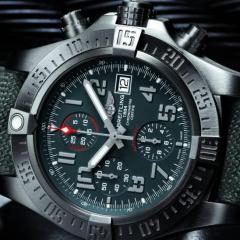-
Recently Browsing
- No registered users viewing this page.
-
Topics
-
Posts
-
That was my gut feeling as indicated in my previous post. The total time in water is 15 minutes which seems too long. I go half that time at room temperature. I go six minutes of cleaning in Elma Red 1:9, less than two minutes of rinsing in battery water, and about two minutes in IPA. Depending on how dirty the movement is I get a fairly good result. For a near-perfect result, I need to pre-clean the parts by brushing them off in a degreaser and then in some IPA.
-
By nevenbekriev · Posted
Yes, the screw seems to be forced in the smaller hole. In such case the screws will not unscrew when drilled with reverse drill bit. You option is to dissolve it. And yes, it is possible to drill a hole in it, then to press tappered broach in and try to unscrew, but it is much harder way. -
So that is what the last person to work on this movement appears to have done. There was a "wad" of adhesive material in the vicinity of that hole when I took the dial off. I was hoping to take the high road and fix the issue in the work I did on this movement. I wasn't sure if I was imagining things or not when I looked at the screw hole, but it does appear to be somewhat distended. I had not considered the posibility that someone had forced a screw that too big in there. I had wondered about using a technique I've applied in other applications (where the screws are in the same scale as human hands) that involves counter drilling the plug with a reverse threaded tap. When I've had to do that in the past, the screw has generally caught and backed out from the torque on the tap (instead of yielding and letting the tap bore into it.) I don't like doing that, but it's saved my rear a couple of times, but the smallest bolt I've tried that on had a 5 mm head. This is an entirely different ball of wax. I am still contemplating disolving the screw with alum, even if that means I have to stick the dial down with double sided tape until I gain the skills to actually replace the screw.
-
Hi Thomas, you should be able to find the right (or on close to beeing) in a Ronda or DCN balance staff catalogue. Cousins uk have those available as a download.
-






Recommended Posts